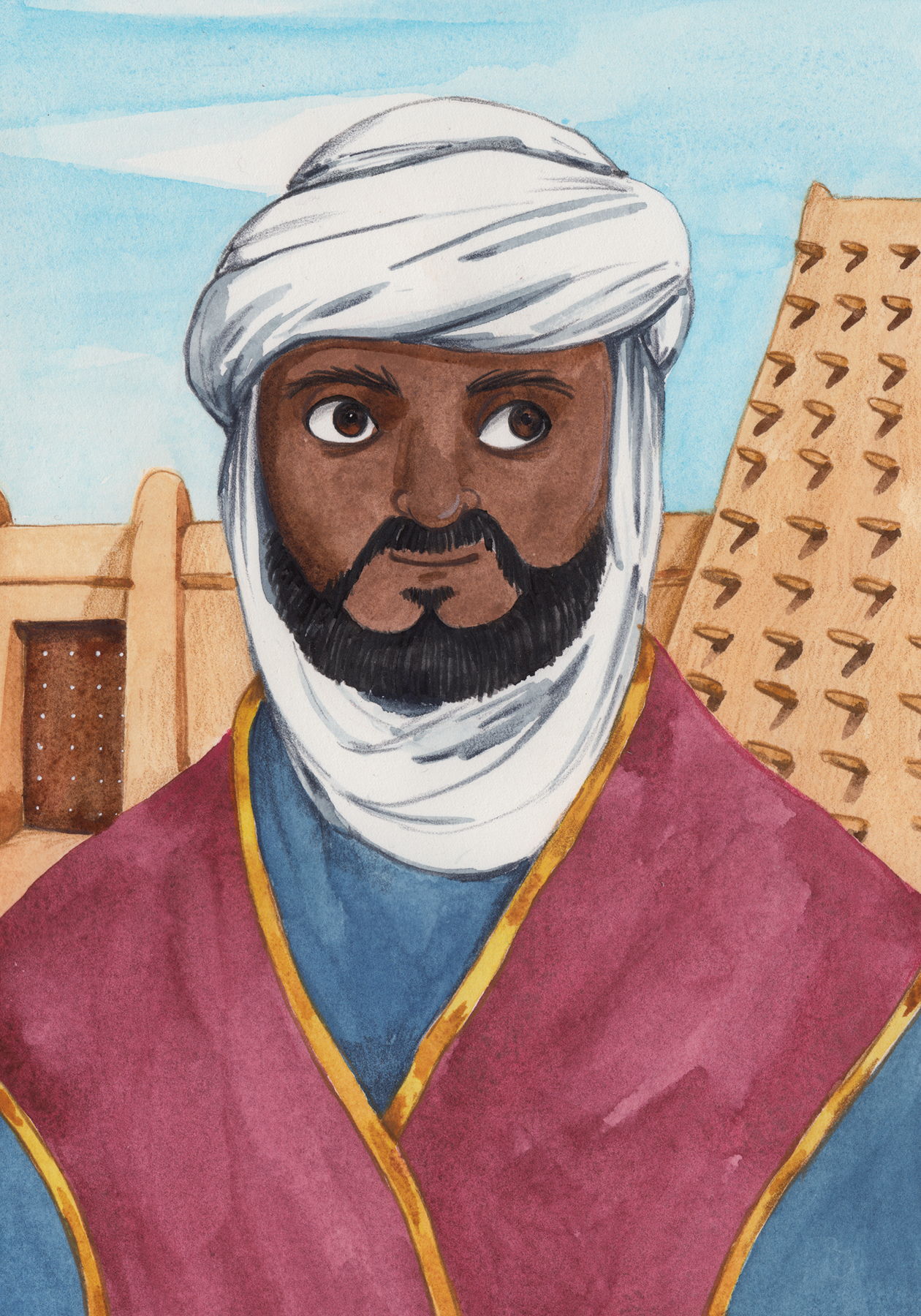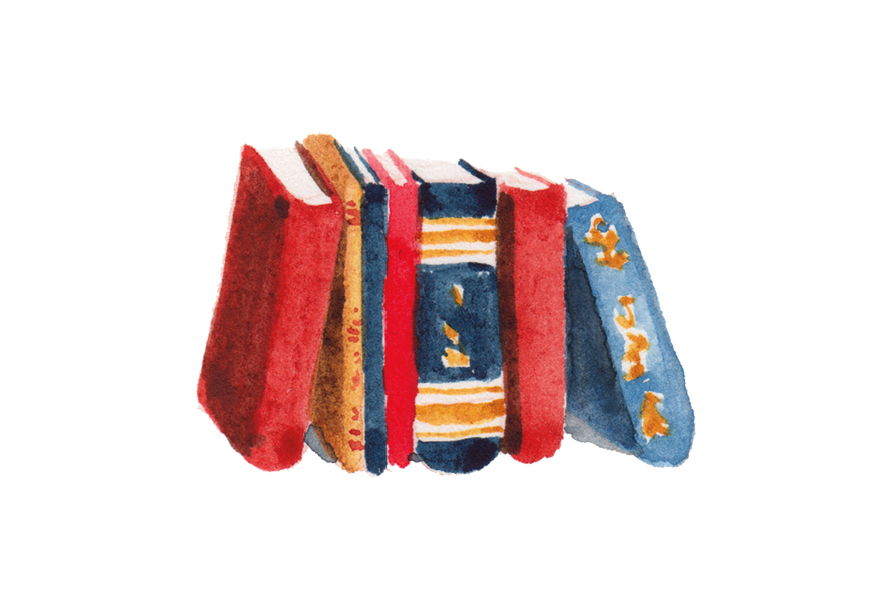ASKIA THE GREAT

THE SONGHAI SUPERPOWER (TIMBUKTU, SONGHAI EMPIRE)

REIGN: 1493–1529
FATHER: Arlum Silla / MOTHER: Kassai
SUCCESSOR: Askia Monzo Musa
REAL NAME: Mohamed Touré

WHAT WAS SO GREAT ABOUT ASKIA?
Askia helped to unify many diverse cultures in West Africa at a time when they had long been fighting. The peace and stability that developed during his reign led to a Golden Age in his kingdom. Commerce across the vast region of West Africa thrived during his reign, and he was instrumental in the spread of Islam.
GREAT BY CHOICE
Askia wasn’t supposed to be king. He started as a general in the army of Soni Ali—the leader who had built the Songhai Empire. Ali had a reputation as a cruel king. When Ali died, his unpopular son took over and the country was thrown into turmoil. Askia knew he could rule better, so with the support of the people, he defeated Ali’s son and became king.
As king, Askia expanded the empire all the way to the Atlantic Ocean. It became the largest empire in the history of the African continent, as big as modern-day Europe.
People from many different cultures lived in Songhai. Keeping such a vast empire together was no easy task. Askia created a central government with ministries overseeing areas such as commerce, army, navy, taxes, and the treasury. He also appointed mayors and governors across the kingdom. His diplomatic corps invited ambassadors from other kingdoms to come to Songhai and encouraged scholars from around the world to move to his capital city, Timbuktu. It became an international center of learning and trade (see below).

Askia helped develop Sankore University in Timbuktu. At its height, there were around 25,000 students at the university studying in one of four different colleges. Courses offered included philosophy, religion, science, navigation, astronomy, medicine, architecture, engineering, and more. Scholars came from all over the Islamic world to teach there.
SEE YOU IN TIMBUKTU

Nowadays, if someone wants to indicate that something is very far away and hard to get to, they might say, “From here to Timbuktu.” But do you know anything about the real Timbuktu?
It’s a city located in present-day Mali. But in Askia’s time it was one of the most exciting cities in the world. It was called the Athens of Africa because it was a major center of knowledge. It was also called the Mecca of the Sahara because it was an Islamic spiritual center. A French explorer who visited during Askia’s time said it was one of the most amazing places he’d ever seen. There were hotels and restaurants for travelers and at night, there were people playing music and dancing in the streets until after midnight, according to one visitor’s record.
Located at a major crossroads for the desert caravans (see below) and on the banks of the Niger River, Timbuktu was called the place where the canoe and the camel met. Timbuktu was truly a melting pot of cultures. Trade brought people from all over North Africa to the city. Because so many people met and exchanged ideas there, Timbuktu also became a very important place to the spread of Islam. There was an important mosque in the city.
As sea travel began to become more popular, trade shifted to coastal towns, and Timbuktu began to be forgotten. But today, Timbuktu is a UNESCO World Heritage site, recognized as a place incredibly important to world history.
THE TRANS-SAHARAN SUPERHIGHWAY

Imagine caravans stretching miles long, traveling through the Sahara for months at a time, bringing precious goods and practical items to new markets across the desert.
Salt, gold, ivory, kola nuts, cloth, beads, glass, ceramics, and gemstones: these are just a few of the items that were traded in Timbuktu during Askia’s time. There was no currency back then, so traders bartered or used pieces of gold.
Caravan journeys could cover 1,000 miles or more and take several months to complete. There were routes that started as far north and east as Tunis on the Mediterranean Sea, linking to other routes coming toward Timbuktu. While the average caravan would have included around 1,000 camels, there are reports of caravans with as many as 12,000 camels! Askia himself led a caravan this large to Mecca.
Caravan travel wasn’t easy, however. The temperatures in the desert were extreme—blistering heat during the day, freezing at night. The organizers of the caravan would have to identify oases along the way and try to keep good time to make sure they were able to reach the next stop before running out of water. Trade would take place not just in the cities, but in the oases, too. That’s why Askia took control of the major oases.
Caravan travel could be very dangerous. Raiders would hide and ambush travelers, stealing their goods. Because of the remoteness of the desert, there would be no way for those who had been robbed to reclaim their goods.
Although there are good roads in the Sahara today, some travelers still take camels to cut distances or go to hard-to-reach places. They carry solar-powered electronics and can use satellite mapping, though, so they don’t need scouts to find their next oasis!

DESERT LIBRARIES

In Askia’s time, books were luxury items. Books from all over were brought to Timbuktu to be traded. Everyone wanted them, so they were expensive. There were books on topics ranging from science to poetry.
Some books were written in Arabic and some were written in African languages using the Arabic script. Even though many of the books were written elsewhere, there was also a major book copying industry in Timbuktu.
With so many books, there were a lot of libraries—maybe as many as one hundred in Timbuktu. Some of the smaller libraries in the city had more than a thousand books in their buildings. There were more books in Timbuktu than any place in the world during Askia’s reign.
When the Moroccan army invaded Timbuktu in 1591, they burned many of the libraries, destroying the books. They brought some books back to Morocco, where they stayed until it was colonized by France. Then some of the books were taken to France and put into museums. For centuries in Timbuktu, local people kept books in private homes or hidden in caves to protect them. Some of them were rare illuminated manuscripts, dating back as far as the thirteenth century.
In 2012, the books were once again threatened by war. A group of soldiers seized books at one of Timbuktu’s historic libraries because they didn’t like what the books said. They threw them in a bonfire. But a librarian in Timbuktu was able smuggle thousands of books out of the country to save them. Once the fighting in the area was over, the books were moved back. It’s estimated that there are between 200,000 and 300,000 books in the library today!
Askia is said to have gone on a pilgrimage to Mecca, bringing with him a caravan of 1,500 soldiers and carrying 300,000 pieces of gold. This display of power and wealth impressed people and leaders along the way and cemented his reputation as a man of great stature.
 Askia’s Legacy
Askia’s Legacy 
Askia is remembered for spreading Islam and increasing trade with Europe and Asia. His support for scribes and scholars and the books they wrote made it possible for us to understand more about African history today.
WHEN ASKIA WAS KING…
the Spanish began exploring the Americas
trade on a global scale began to take off
the Ottoman Empire conquered Egypt